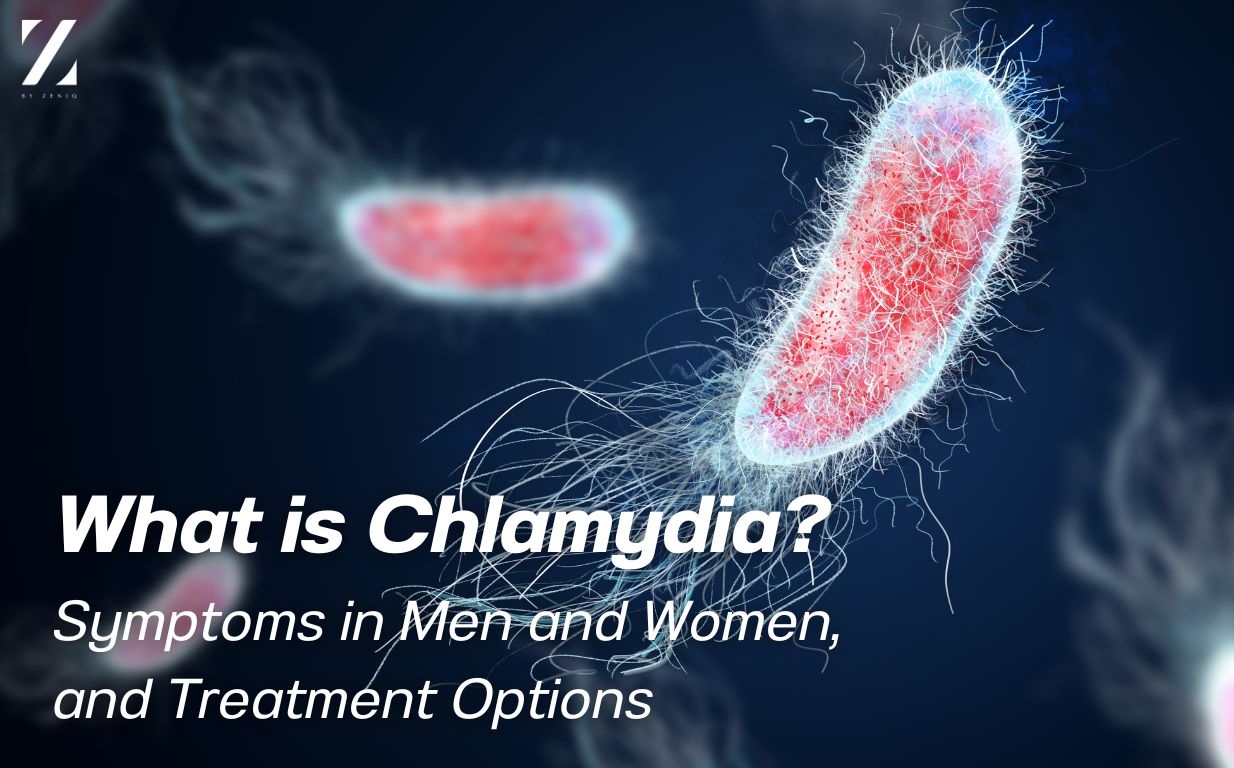Chlamydia is a common sexually transmitted infection (STI). Although it shares similarities with gonorrhea, its causes and symptoms differ. Understanding the symptoms of chlamydia in both men and women can help you better recognize changes in your body. If you suspect you may have contracted the infection, it’s important to consult a doctor promptly for appropriate treatment.
This article will provide you with more detailed information about chlamydia, including symptoms in both men and women, and the correct treatment methods to help you maintain good health.
What is Chlamydia?
Chlamydia (Chlamydia trachomatis) is a bacterial STI that is typically transmitted through sexual contact with an infected person. Many individuals with chlamydia may not show symptoms, making it difficult to know that they are infected. This can be dangerous, as untreated chlamydia may lead to long-term reproductive health problems.
Chlamydia vs. Gonorrhea: What’s the Difference?
Chlamydia and gonorrhea are both STIs caused by different types of bacteria:
- Gonorrhea is caused by Neisseria gonorrhoeae bacteria.
- Chlamydia is caused by Chlamydia trachomatis bacteria.
Despite having different causes, the symptoms of both infections can be similar, such as painful urination or discharge from the urethra or genital area. However, chlamydia often has milder or less noticeable symptoms than gonorrhea, and its incubation period is typically longer, which may make it harder to diagnose.
Symptoms of Chlamydia
Chlamydia symptoms typically appear 1-3 weeks after infection, although they may not be immediately noticeable. The symptoms differ between men and women:
In Men:
- Clear or cloudy discharge from the penis, which is different from urine or semen.
- Inflammation, redness, or swelling around the head of the penis, causing discomfort at the area.
- Pain or burning sensation when urinating.
- Some men may experience pain or swelling in the testicles.
In Women:
- Most women show no symptoms, which makes early diagnosis more difficult. However, about 30% of women may develop symptoms, such as:
- Abnormal vaginal discharge (increased amount, yellow or green color, and foul odor).
- Pain or burning sensation during urination.
- Itching or irritation in the genital area.
- Lower abdominal pain during menstruation or intercourse.
Other Possible Symptoms:
Both men and women may experience symptoms from anal or oral sex, including:
- Pain, bleeding, or discharge from the anus.
- Sore throat, coughing, fever, or irritation in the mouth.
What Causes Chlamydia?
Chlamydia is caused by the Chlamydia trachomatis bacterium, usually spread through unprotected sexual intercourse with an infected individual. The bacteria can also be transmitted through other means:
- Genital contact (the most common transmission route via vaginal, anal, or urethral contact).
- Anal sex.
- Oral sex.
- Eye contact with infected bodily fluids.
- From mother to child during childbirth, potentially causing infection in the newborn.
Can Chlamydia Heal on Its Own?
Chlamydia does not resolve on its own and requires treatment with antibiotics prescribed by a doctor.
Diagnosis by a Doctor
If you suspect you have chlamydia, your doctor will take a medical history and inquire about potential risk behaviors. A physical examination is followed by a test to detect the bacteria, usually involving the collection of samples from areas where infection is suspected (e.g., the cervix, urethra, anus, or throat). Common testing methods include:
- Swab test: A cotton swab is used to collect fluid from the infected area for laboratory analysis.
- Urine test: A urine sample is collected for testing.
Test results are usually available within 7-10 days, but if symptoms are severe or if you’re at high risk, treatment may begin immediately to prevent complications.
Treatment for Chlamydia
Chlamydia is typically treated with antibiotics. The most common options include:
- Azithromycin: Taken as a single dose, usually before meals.
- Doxycycline: Taken twice daily for 14 days after meals.
- Erythromycin: Taken four times daily for 14 days.
- Roxithromycin: Taken twice daily for 14 days before meals.
For eye infections in adults, treatment is similar but may involve different dosing regimens.
Treatment During Pregnancy
For pregnant women, doctors typically use a combination of antibiotics, such as:
- Ceftriaxone: An intramuscular injection.
- Azithromycin: Taken as a single dose.
- Erythromycin: Taken for 7-14 days, with multiple doses.
Treatment for Children
Treatment for children depends on age, weight, and the site of infection. Common options include:
- Erythromycin or Azithromycin for children under 8 years old, with doses based on weight.
- For eye infections in infants, Erythromycin or Azithromycin is used.
Recovery Time
Most patients begin feeling better within 1-2 weeks of starting treatment. It’s crucial to complete the full course of antibiotics, even if symptoms improve, to prevent antibiotic resistance. After 3 months, a follow-up health check is recommended, and your partner should be tested as well.
Treatment for Antibiotic-Resistant Chlamydia
Treatment for antibiotic-resistant chlamydia requires careful management by a healthcare provider, and it’s essential to follow medical advice and attend follow-up appointments.
Complications of Chlamydia
If left untreated, chlamydia can cause serious complications:
- In Men: Risk of epididymitis (testicle infection), prostatitis (prostate infection), and potential infertility. Some may also develop reactive arthritis.
- In Women: Untreated chlamydia can lead to pelvic inflammatory disease (PID), causing severe abdominal pain, fever, and potentially affecting fertility. It can also increase the risk of ectopic pregnancy and long-term health problems.
Prevention of Chlamydia
The best way to prevent chlamydia is to avoid risky behaviors, particularly unprotected sex. Other preventive measures include:
- Use condoms: Consistent and correct condom use reduces the risk of transmission.
- Monogamous relationships: Limiting sexual partners lowers the risk of infection.
- Regular health check-ups: Particularly if you have risk factors, regular screenings help detect infections early.
Conclusion
Chlamydia is a serious STI that can cause long-term reproductive and overall health problems if left untreated. Since many individuals show no clear symptoms, regular testing and preventive measures such as condom use and monogamous relationships are essential for maintaining sexual health.
If you suspect you might have an STI or wish to undergo testing, Z by Zeniq is available to provide professional screening and confidential counseling with expert healthcare providers.




